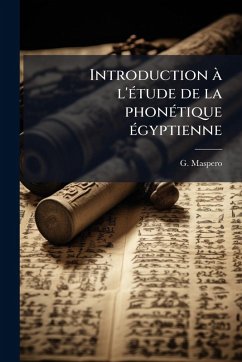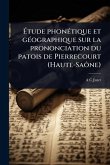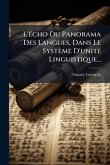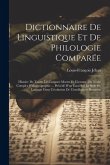Introduction à l'étude de la phonétique égyptienne, written by G. Maspero and published in 1917, offers a detailed exploration of Egyptian phonetics. This book provides insights into the linguistic nuances of ancient Egyptian, focusing on its phonetic structure and pronunciation. Maspero's work is invaluable for students and scholars of Egyptology and historical linguistics. The book meticulously examines the sounds and phonetic elements of the Egyptian language, contributing to a deeper understanding of its grammar and structure. This historical study remains a significant resource for anyone interested in the linguistic history of Egypt. This work has been selected by scholars as being culturally important, and is part of the knowledge base of civilization as we know it. This work was reproduced from the original artifact, and remains as true to the original work as possible. Therefore, you will see the original copyright references, library stamps (as most of these works have been housed in our most important libraries around the world), and other notations in the work. This work is in the public domain in the United States of America, and possibly other nations. Within the United States, you may freely copy and distribute this work, as no entity (individual or corporate) has a copyright on the body of the work. As a reproduction of a historical artifact, this work may contain missing or blurred pages, poor pictures, errant marks, etc. Scholars believe, and we concur, that this work is important enough to be preserved, reproduced, and made generally available to the public. We appreciate your support of the preservation process, and thank you for being an important part of keeping this knowledge alive and relevant.
Bitte wählen Sie Ihr Anliegen aus.
Rechnungen
Retourenschein anfordern
Bestellstatus
Storno








